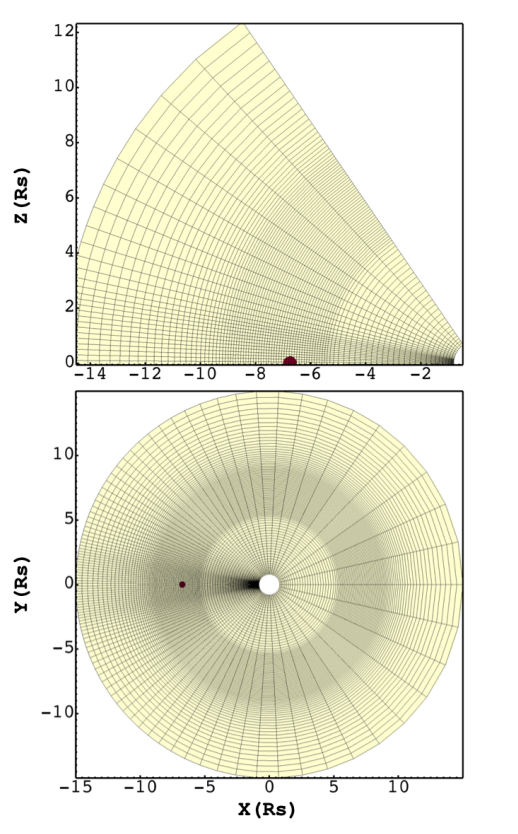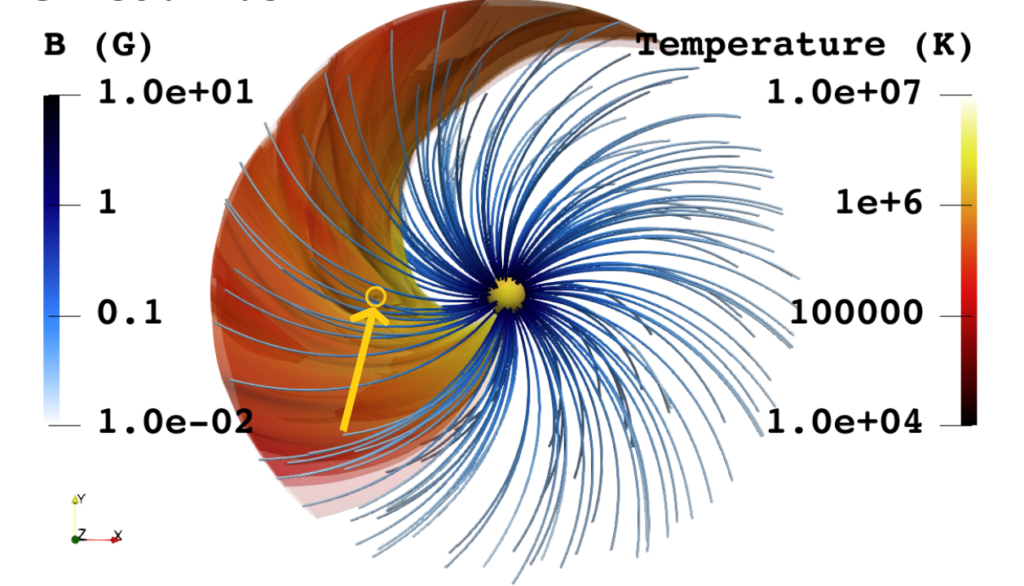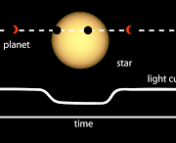Title: The enigmatic dance of the HD 189733A system: Does the planet accrete onto the star?
Authors: S. Colombo, I. Pillitteri, A. Petralia, S. Orlando, and G. Micela
First Author’s Institution: INAF-Osservatorio Astronomico di Palermo
Status: Accepted for publication in Astronomy and Astrophysics [open access]
The System
No exoplanetary systems (planetary systems around stars other than our sun) have been observed to have a structure exactly like our solar system. This is partially because some systems are just easier to see than others. Perhaps the easiest type of system to observe is one that includes a hot Jupiter. This is a planet about the size of Jupiter that orbits exceptionally close to its host star (tens of times closer to its star than Mercury is to the Sun!!) so that the surface of the planet is, in fact, quite hot. Besides the planet’s surface being heated by its host star, there may be other ways in which the planet and star affect each other’s environments in a process generally referred to as star-planet interaction (SPI).
The exoplanetary system these authors address– HD 189733A and b– is one such hot Jupiter system that may exhibit emission due to SPI. More specifically, the star HD 189733A has been observed to produce X-ray flares at a rate that depends on the planet’s location in its orbit, referred to as its orbital phase. There have been a couple of explanations for why the occurrence of X-ray flares might line up with the planet’s orbital phase; the authors here model the material ejected by the star and planet as fluids to explore the possibility that material from the planet being accreted onto the star is responsible for this X-ray emission.
The Dynamics

Because HD 189733A ’s planet is a hot Jupiter, its gaseous composition will likely be more puffed up and tenuous than Jupiter’s. This is consistent with the classic thermodynamic equilibrium equation for an ideal gas: if we keep the pressure constant, an increased temperature means a lower density (and equivalently, a larger volume for the material to occupy). This makes it easier for the planet’s material to evaporate into the surrounding medium and might make it easier for it to accrete onto its host star.
The evaporated planetary material is called the planetary wind, while the medium it interacts with is the stellar wind. Each wind can be treated as a fluid flow rather than trying to address each individual particle in the flow. This is great– the more elements you have to keep track of in your models, the more complicated modeling becomes. However, even though the authors don’t need to address each individual particle, the planetary wind is expected to be much weaker than the stellar wind– this means we still need some fine details on how the material varies in space if we want to actually distinguish the planetary wind from the stellar wind.
To address this resolution necessity without exhausting their computational resources too much, the authors chose a reference frame that maximizes the spatial resolution near the planet, near the star, and in the space between the planet and star, as shown in Figure 1. This allows the authors to model the interactions between the planetary and stellar wind to relatively high detail without using resources on parts of the system where they don’t want (or need) high resolution.
The Results
At each grid space defined by the author’s unique resolution requirements, the authors can calculate the system’s density, temperature, magnetic field strength, and the velocity of the material. They find these quantities for various stellar magnetic field strengths and planetary magnetic field strengths.
Of all of the various planetary and stellar magnetic field strengths the authors considered, there was only one mixture that led to accretion from the planet to the star. This was the system where the stellar magnetic field was 5 Gauss (about five times the strength of the Sun’s field), and the planetary field was about 1 Gauss (comparable to the Earth’s field strength). This combination of field strengths forms instabilities necessary to mix material and lead to the accretion of the planetary wind onto the star; if the stellar field is too strong, then the instabilities can’t form. On the other hand, if the planet’s field is too strong, it holds on to its material too effectively to be accreted. And if both fields are weak, the planet’s wind just gets blown away!
This does not bode well for accretion being an explanation for the X-ray emission we see from HD 189733A. The authors used the derived temperatures and densities from these models to estimate the X-ray luminosity from the accretion and found that not only is accretion unlikely to occur, but it is entirely incapable of producing the luminosity changes that have been observed for the system.
Although the authors find that it’s extremely unlikely that accretion is responsible for the exoplanet-phase-dependent X-ray emission from HD 189733A, not all hope is lost for the possibility of this emission being driven by SPI. An alternative explanation is that the planet’s magnetic field interacts with the star’s magnetic field to cause reconfigurations of the magnetic fields, releasing energy to produce flares. These dynamics are quite involved and so are outside the scope of the modeling done in this paper. Still,the models already suggest quite complex winds (as shown in Figure 2) that may be favorable to this field reconfiguration occurring. You can even view these winds from various angles through the interactive model the authors provided here!

Although it remains unclear why HD 189733A’s X-ray flares seem to depend on the planet’s orbit, we’re now fairly certain that accretion is not the culprit. Especially with the release of new X-ray data from surveys like eROSITA, it’ll be fascinating to see how our understanding of the cause of these flares evolves.
Astrobite edited by Archana Aravindan
Featured image adapted from authors’ sketchfab model




